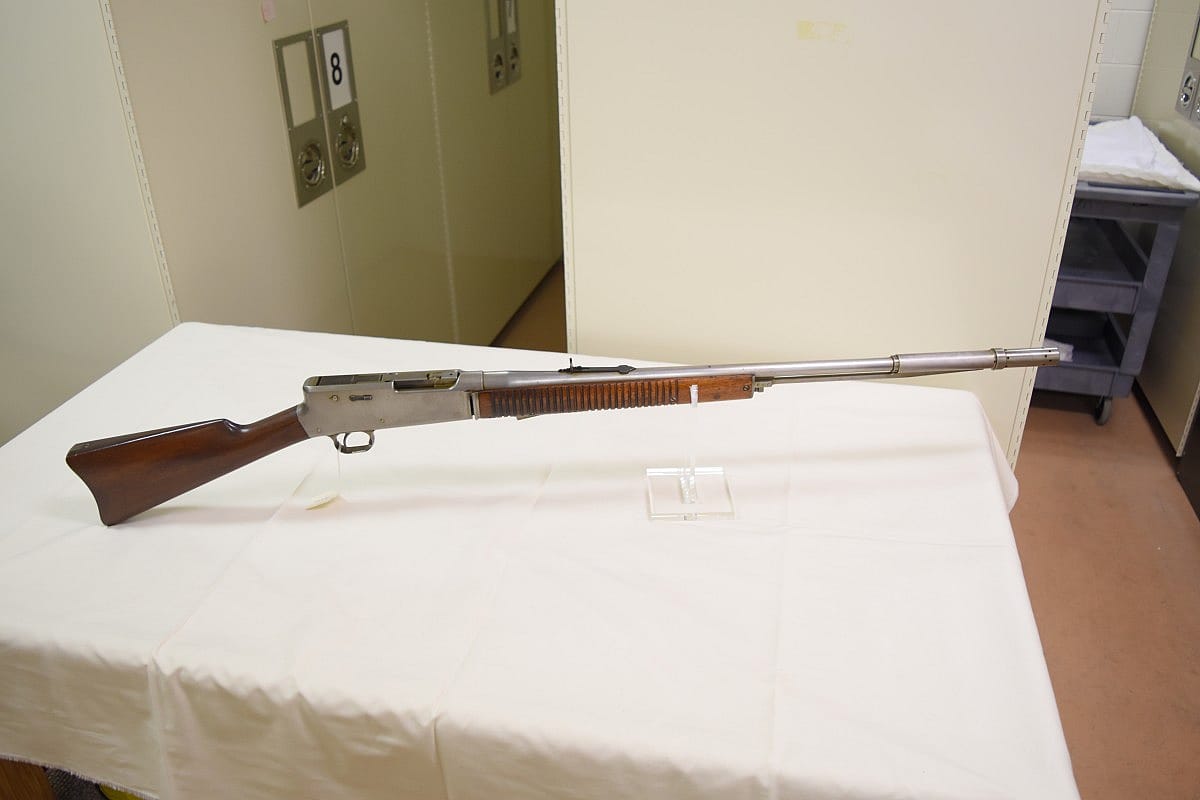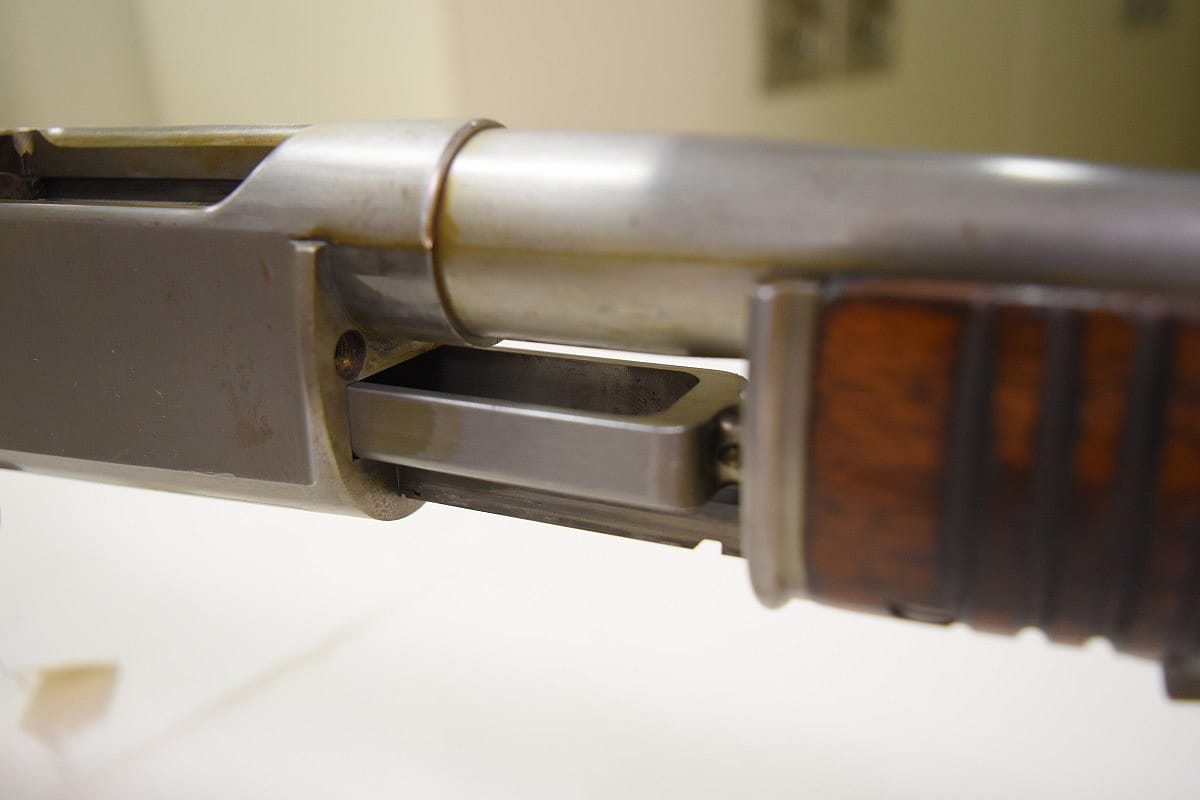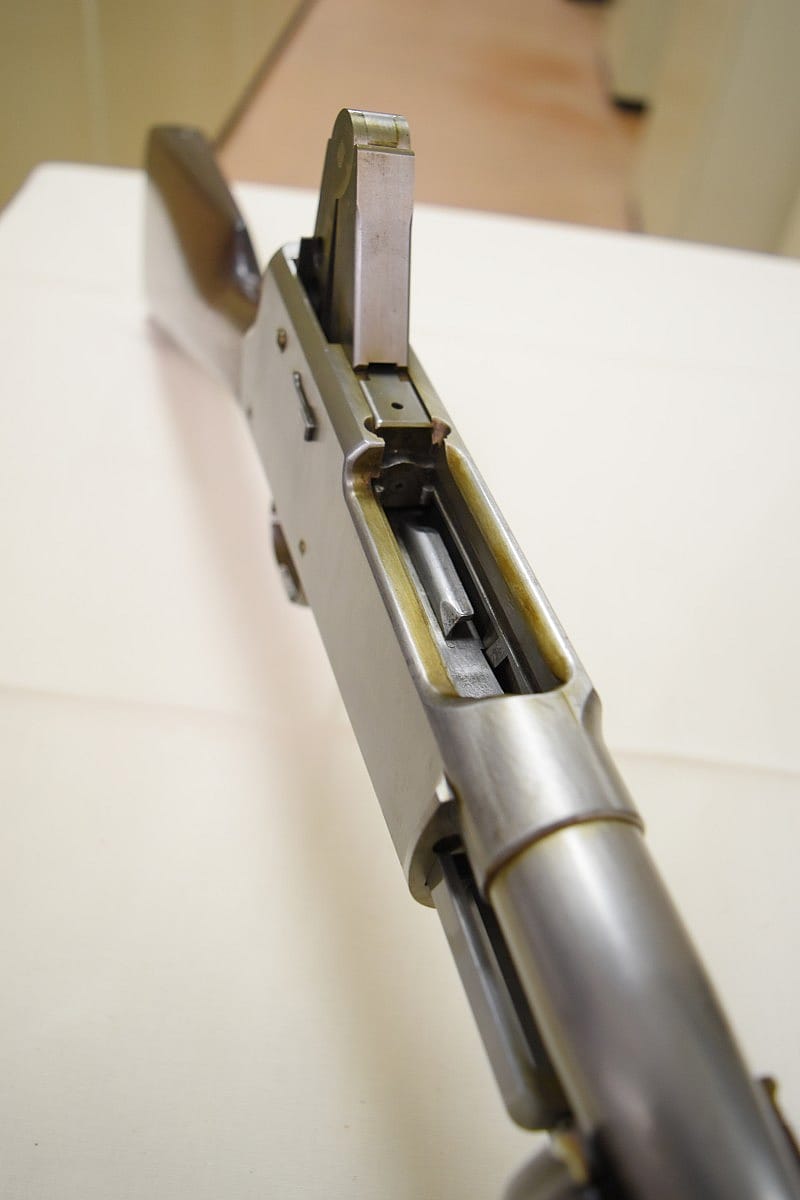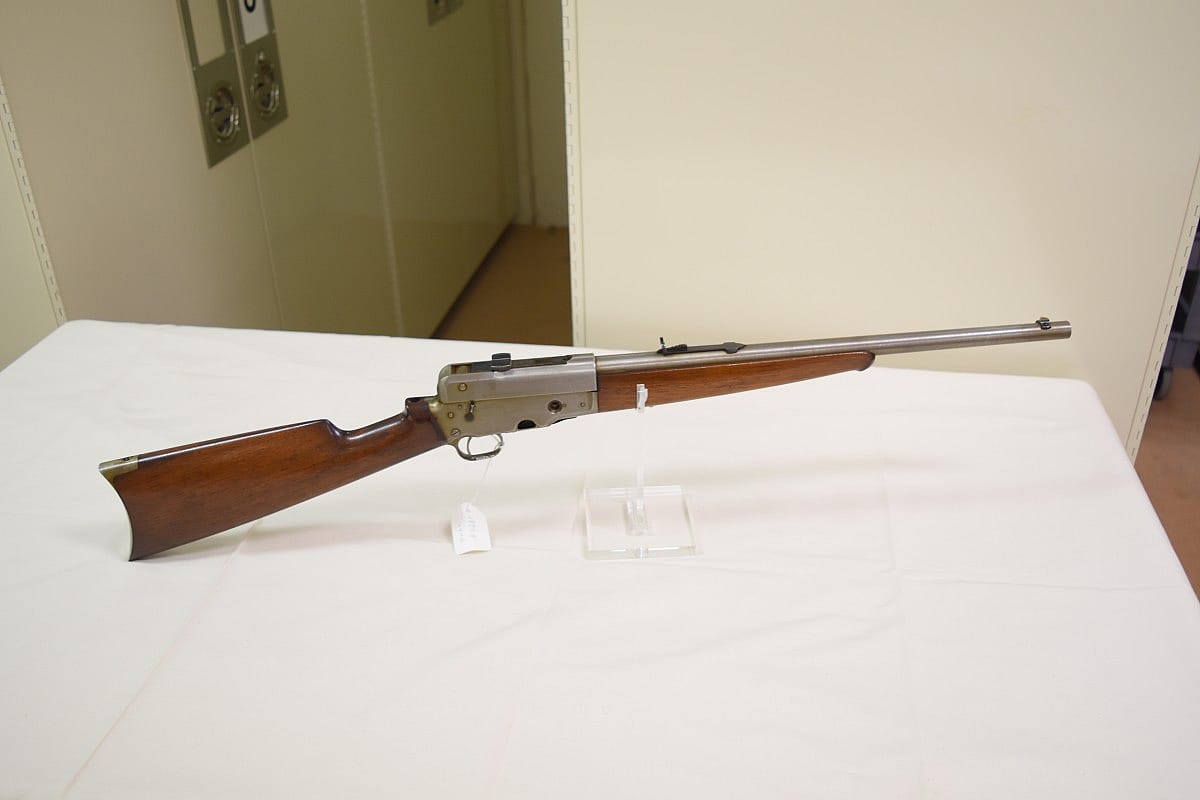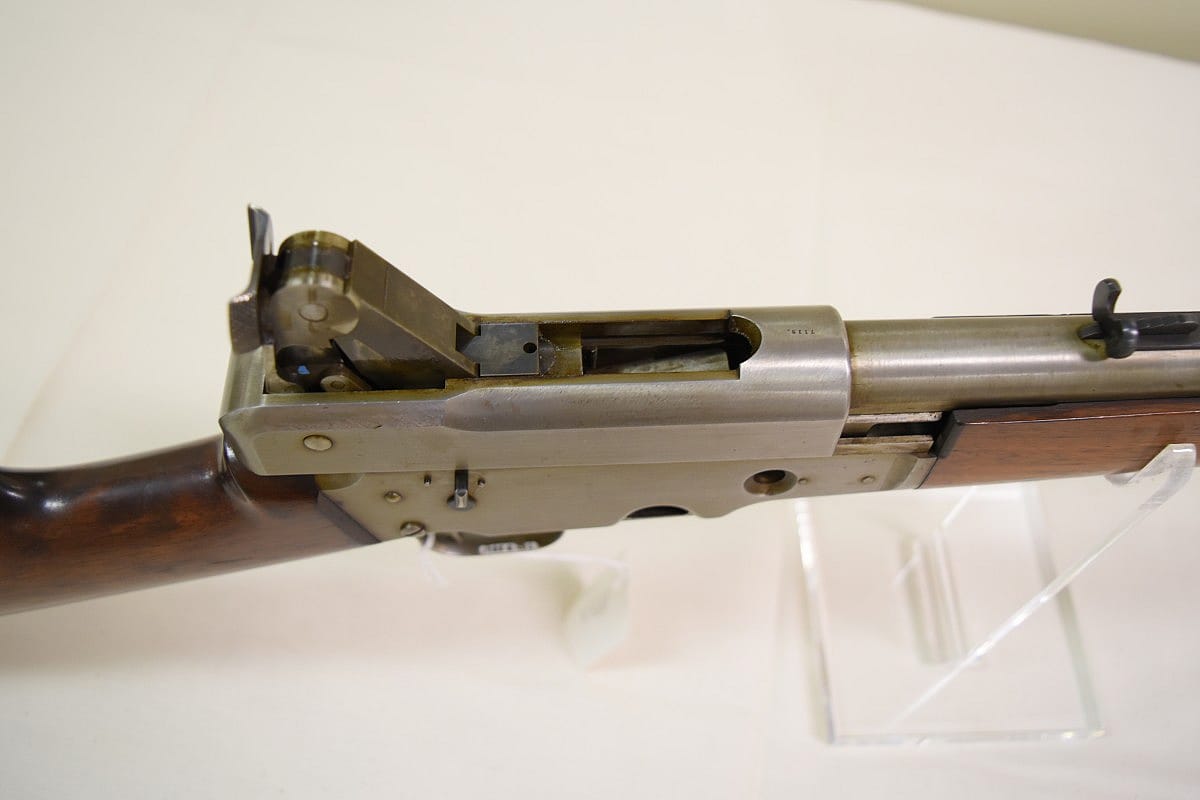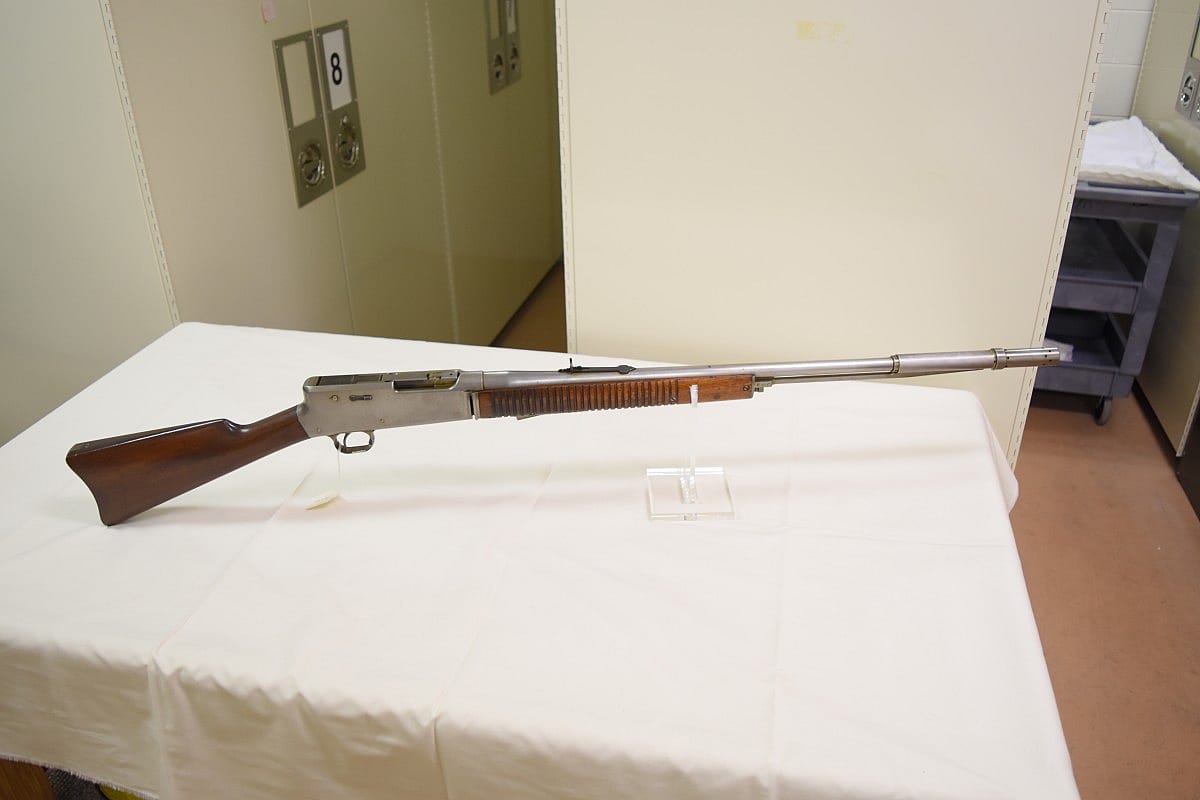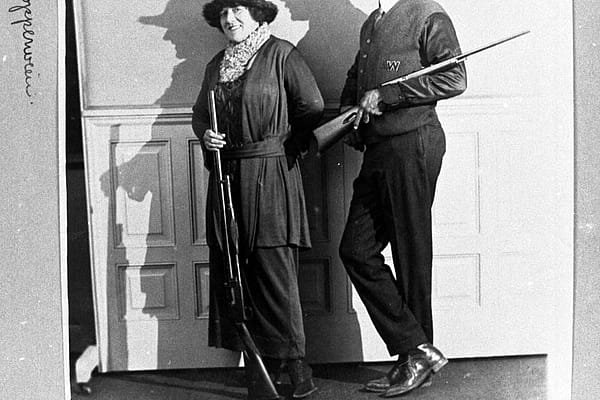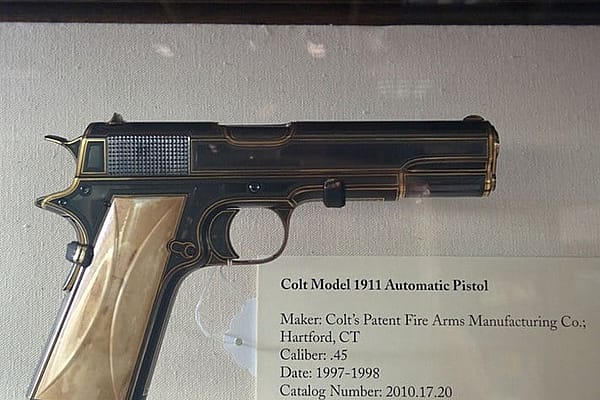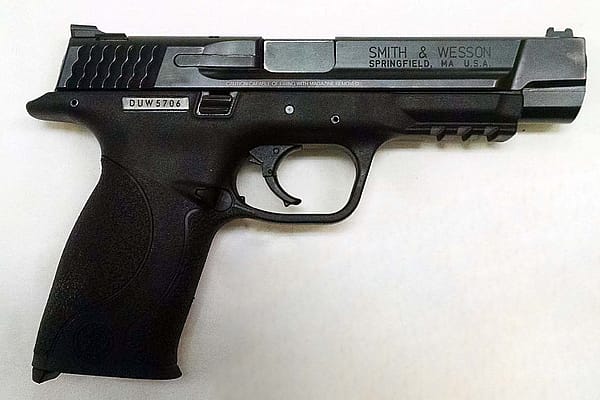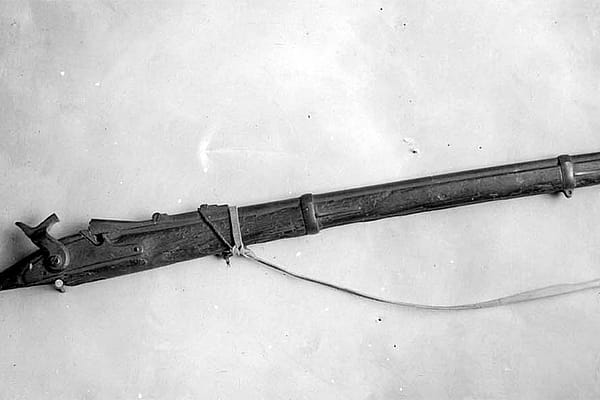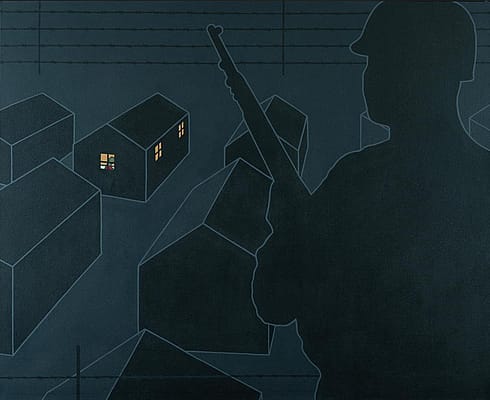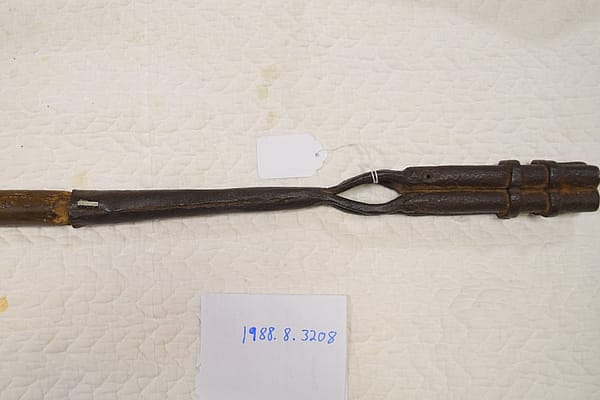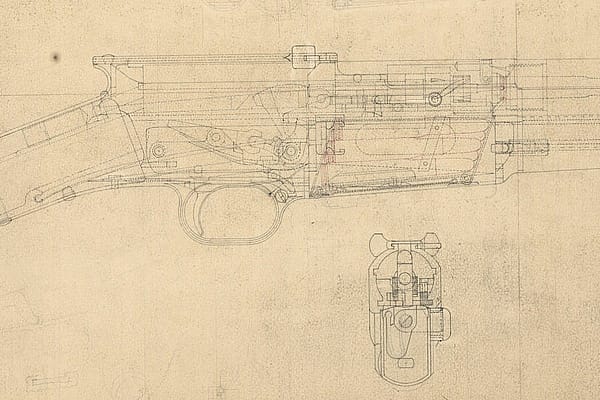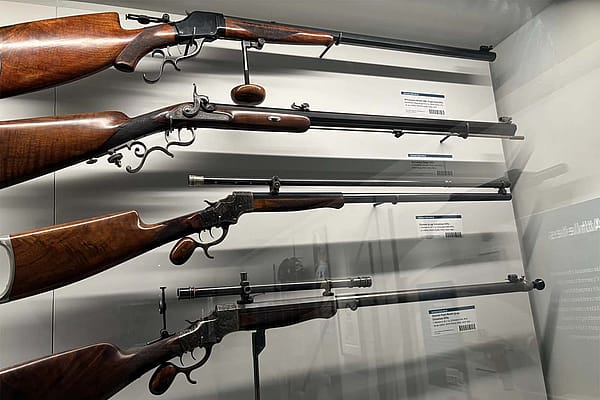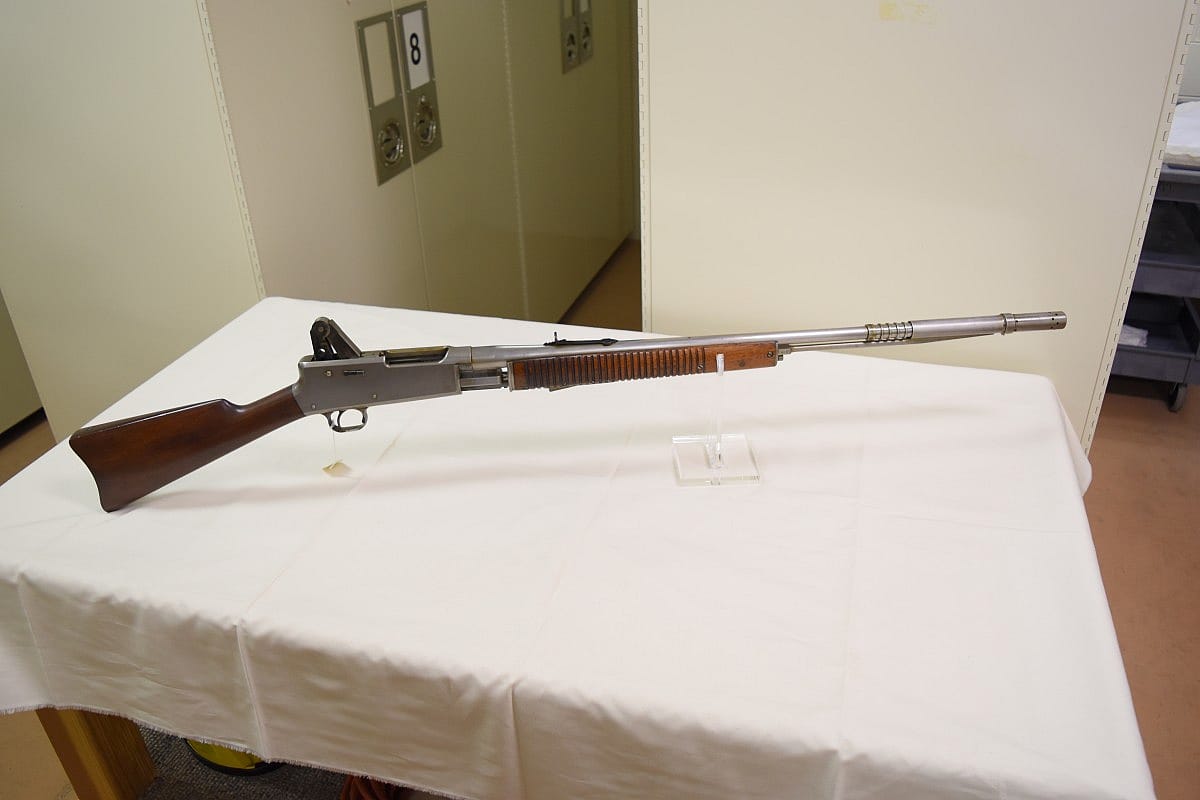
William Mason’s Experimental Toggle Link Firearms
The late 19th and early 20th century saw a broad push by arms manufacturers to build self-loading firearms. In this blog post I will be highlighting several of the Winchester Repeating Arms Company’s early prototypes designed by William Mason and T. G. Bennett. Competition between firearms manufacturers was fierce and Winchester wanted a technological edge over their competition. They turned to William Mason, the man who helped created the legendary Colt Single Action Army. Mason experimented with several types of gas and recoil operated designs. Mason had a series of interesting prototypes that were based on Hugo Borchardt’s toggle link design and development persisted on a rifle, carbine and shotgun, despite Borchardt threatening lawsuits for patent infringement.
Initial efforts developed rifles chambered in .30-40 Krag and a 7mm round feeding from a fixed box magazine. Scaling up and modifying Borchardt’s toggle link proved problematic. First was the recoil of the rounds had a tendency to leave the action jammed open. Second, extraction prove was finicky in the early tests. Mason changed the action from recoil operated blowback to a gas operated design. The rifle is charged by thumbing a lever on the left side of the receiver. This unlocks the hand guard which can then be pushed forward. This action opens the toggle link enable the loading of the magazine. After loading the fore-stock is pulled to the rear which closes the action and charges the rifle.
The handguard itself is non-reciprocating when the rifle is being fired with the gas system on. If the gas system failed or was turned off the rifle could be manually operated as a slide action firearm. Mason created a very unusual blow forward sliding gas chamber. When firing the gas trap pulled an operating rod that extended back under the fore-stock operating a cam that pushed the toggle link open. Gas pressure was adjustable by closing or opening additional ports milled into the sleeve. The action also included a self cleaning elements with a spiral rib and circular ribs machined into it that would scrape surfaces clean to help clear out fouling as the gas trap moved. The spiral rib would be machined at different angles depending on the chambering of the rifle to control pressure. To combat extraction problems Mason redesigned the bolt with twin extractors to better pull spent casings out. The spent casings were then kicked up and out of the open action by an ejector. At this point the bolt begins to return to battery stripping a fresh cartridge form the magazine and chambering it. All together, Mason’s design possessed some advanced features for the period in which it was constructed.
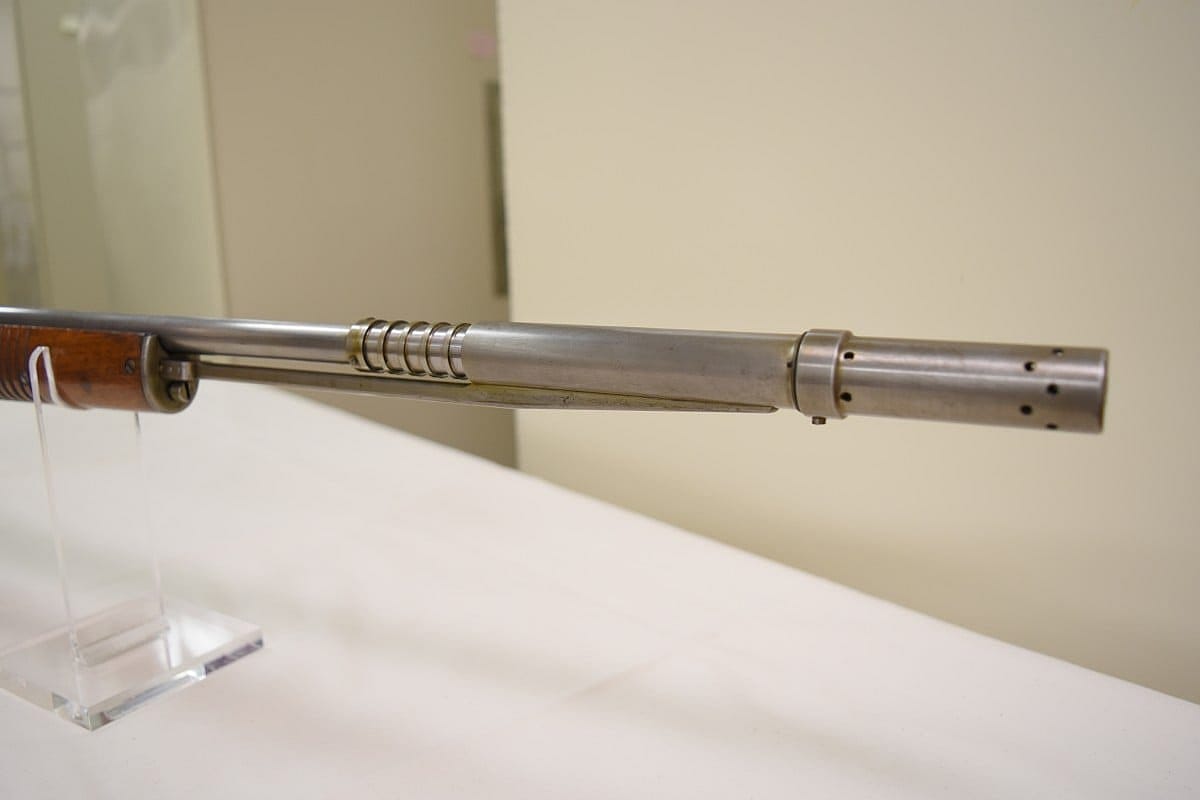
Development at Winchester continued and with a new series of semi-rimless short case ammunition designed for the action, a very handy carbine was built. Information on the new loadings is
sparse unfortunately. The recoil of the new rounds in the carbine didn’t overwhelm the toggle link action and the lower pressure cartridges were easier to extract. By 1901 Mason had produced a working prototype .44 caliber carbine that fed from a fixed box magazine. The carbine worked through a
short recoil toggle link rather than a gas operated system like Mason had to change to during the rifle’s development. This system is significantly less complex compared to Mason’s toggle link rifle. When firing the bolt and barrel recoil together until the barrel disengages from the breech face. At this point the bolt continues to travel rearward ejecting the spent round then stripping a fresh round as it returns to battery. Of the three prototypes, this carbine probably got closest to serialized production.
From the rifle and carbine development, Mason at behest of Winchester, also tried to develop shotguns. The prototype toggle link shotguns were tested in 12, 16 and 20 gauge and fed from a tubular magazine.
Unfortunately little is known about this prototype though it shares elements from both the rifle and carbine development. When chambered in 12 and 16 gauge the strong recoil of the rounds had a tendency to jam the toggle link open. In order to try and tame the recoil of the shot shells Mason developed recoiling buffer system built into the stock but the problem persisted. There is evidence on the shotgun that the recoil was damaging it over time during testing. There are hairline cracks running the length of the stock. All of the shotguns were plagued by extraction issues during testing due to the irregular patterns of the expanded crimping
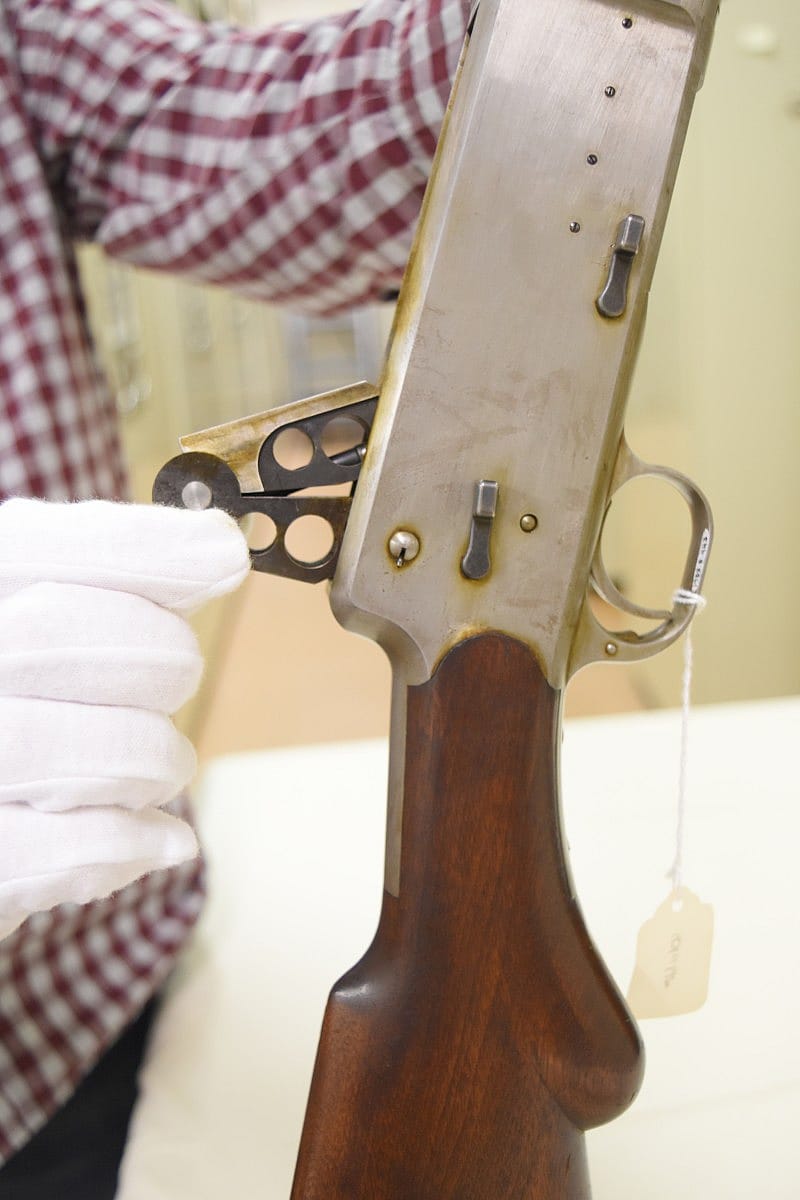
of paper hulls of shotgun ammo at the time. Despite several years of development Mason was forced to abandon the shotgun projects in 1902.
Mason’s work continued until his retirement in 1907. His developed several of his prototypes and drew up manufacturing blueprints but they would never be mass produced. Mason resolved the mechanical issues of several of his prototypes but there was a last disadvantage that he couldn’t fix. The cost of manufacture for toggle link weapons is markedly higher than other designs. The complex actions requires a significant amount of machining to produce and have a large number of parts. During the same period that Mason was developing his prototype toggle links, Thomas C. Johnson, another Winchester designer, was developing a balanced bolt self-loading rifle. Johnson’s design had about half as many machined parts as Mason’s, scaled well into different calibers and was much easier to manufacture. That doomed Mason’s toggle links to only exist as rare prototypes and technical drawings.
Written By
Kyle Hestand
Kyle Hestand is an intern at the Cody Firearms Museum from Louisville Kentucky where he is finishing his BA in History at the University of Louisville. At the CFM he will be answering records inquires, planning tours and performing research. His interests include not sneezing on the firearms, American and Russian history, and spoiling his dog.
